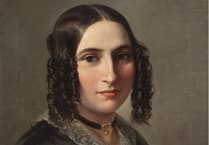A Poor Law Union was a geographical territory and early local government unit that existed in England and Wales from 1834 to 1939.
The union consisted of parishes grouped together that were jointly responsible for the administration of poor relief in the area.
Grouping the parishes together allowed a larger centralised workhouse to be built, which replaced the existing smaller facilities in each parish.
Petersfield Poor Law Union was formed in April 1835.
Its operation was overseen by a board of 16 guardians, which in 1914 was elected from the 15 constituent parishes of the union.
The parishes that formed the Petersfield union were Bramshott, Buriton, East Meon, Empshott, Greatham, Hawkley, Langrish, Liss, Petersfield, Sheet, Steep, Colemore, Froxfield, Priors Dean and Privett.
The Petersfield Union Workhouse was built off Love Lane in 1836 at a cost of £4,350.
The design followed the popular cruciform layout and could accommodate up to 140 inmates.
The grounds extended to two acres, which were used for gardens.
A chapel was added in the latter part of the 19th century.
Although intended to support those in need, workhouses were designed to dissuade those who may take advantage of the system. As a result, they were not nice places to be.
Near to the single guarded entrance were the casual wards for tramps and vagrants and the relieving rooms, where paupers were housed until they had been examined by a medical officer.
After being assessed, the paupers were separated and allocated to the appropriate ward for their category – boys under 14, able-bodied men between 14 and 60, men over 60, girls under 14, able-bodied women between 14 and 60, and women over 60.
In 1861, the Poor Law Board published a list of all long term adult inmates, the length of time they had been in the workhouse and the reason for their being there.
There were eight such inmates in the Petersfield workhouse – Joseph Bratt (22 years, idiot), Richard Colwell (eight years, imbecile), Maria Colwell (eight years, imbecile), Jane Colwell (eight years, idiot), Mary Kingshott (eight years, idiot), William Long (nine years, old age and infirmity), Mary Marshall (six years, old age and infirmity) and Joseph Winter (22 years, idiot).
Under the Local Government Act of 1929, the Petersfield union was finally abolished in 1930.
The workhouse was then referred to as the Petersfield Public Institution, and was still in use in the Second World War when on November 21, 1940, the building took the only direct hit in the town from enemy bombing.
The entire front of the building was demolished and the administrative area in the centre was damaged. Seven people died, including Mr and Mrs Ixer.
Subsequently it was used by Hampshire County Council’s highways department and its child welfare clinic. In 1997 it was redeveloped as social housing, providing ten houses and two flats as part of Rookes Meadow.
Unions were used for other functions, such as civil registrations and rural sanitary districts, which in turn led to the formation of rural and urban district councils.
Unions were also used by the Red Cross as districts for the newly formed voluntary aid detachments in 1909.




